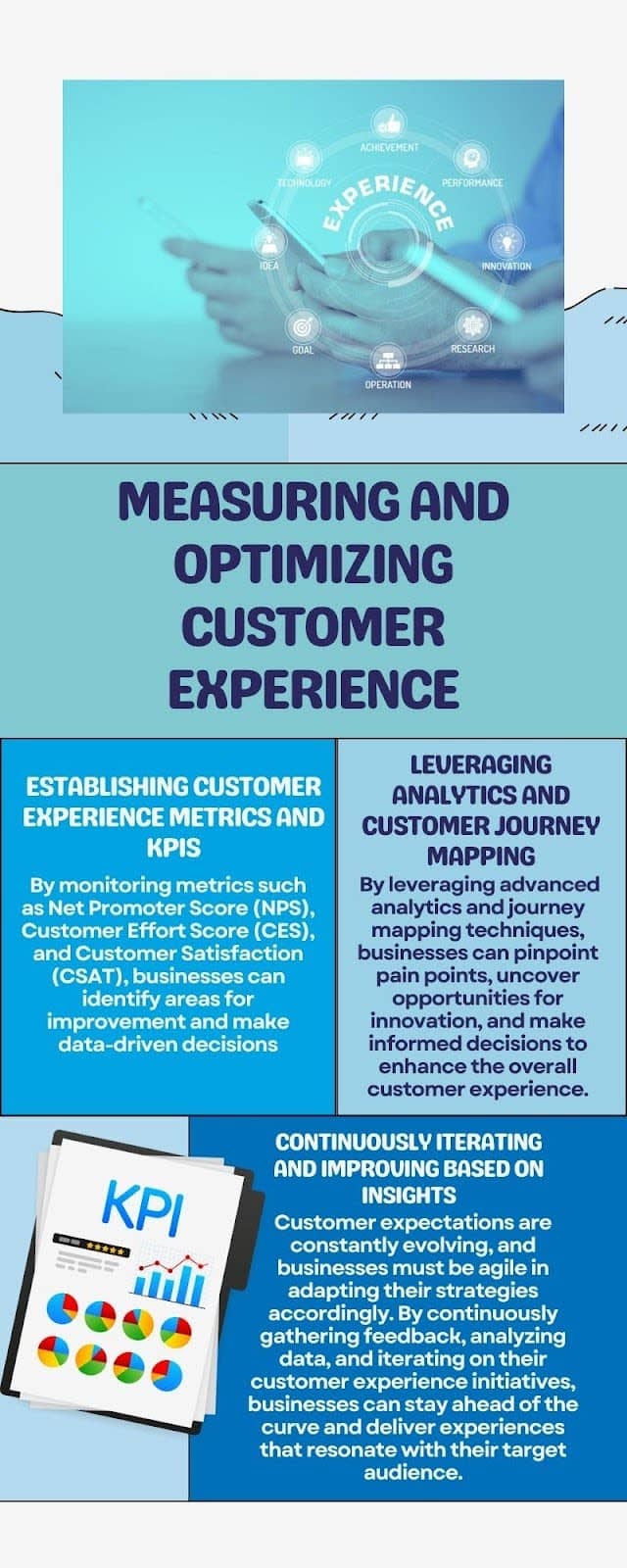Elevating the Experience: Customer-Centric Strategies for the Digital Age
In the era of digital transformation, delivering exceptional customer experiences has become a paramount priority for businesses across industries. As consumers’ expectations continue to soar, companies must adapt their strategies to meet the evolving needs of a digital-first world. Embracing customer-centricity is no longer just a nice-to-have; it’s a fundamental imperative for survival and success.
Chapters
Embracing the Digital-First Mindset

Understanding the Evolving Customer Journey
The customer journey has undergone a profound shift, with 67% of customers now using multiple channels to complete a single transaction. This omnichannel behavior underscores the need for businesses to adopt a digital-first mindset, where every touchpoint is designed to deliver seamless, personalized experiences.
To truly elevate the customer experience, businesses must go beyond traditional marketing funnels and map out the entire customer journey. This involves identifying key touchpoints and moments of interaction across channels, from social media and email to in-store visits and customer experience platforms.
Aligning Organizational Culture with Digital Transformation
Fostering a customer-centric culture requires more than just implementing new technologies; it demands a fundamental shift in organizational mindset and values. Companies with a strong digital culture are 1.5 times more likely to achieve sustained digital transformation success. Empowering employees, promoting cross-functional collaboration, and encouraging a customer-first ethos is essential for driving long-term transformation.
To align organizational culture with customer-centric strategies, businesses must foster open communication, encourage experimentation, and empower employees to take ownership of the customer experience. This involves breaking down silos between departments, promoting collaboration, and providing ongoing training and development opportunities.
Leveraging Data-Driven Insights for Personalization
In the digital age, data is the fuel that powers personalized experiences. 80% of customers are more likely to purchase from a company that offers personalized experiences. By harnessing the power of data analytics, businesses can gain deeper insights into customer preferences, behaviors, and pain points, enabling them to tailor their offerings and interactions accordingly.
To effectively leverage data-driven insights for personalization, businesses must collect and analyze customer data across all touchpoints. This involves tracking customer interactions, preferences, and behaviors, and using this information to deliver relevant and timely experiences. From personalized product recommendations to targeted marketing campaigns, data-driven personalization can help businesses drive engagement, loyalty, and sales.
Crafting Seamless Omnichannel Experiences

As customers navigate across multiple touchpoints, ensuring a consistent and cohesive experience is paramount. Companies with excellent omnichannel customer engagement strategies retain 89% of their customers.
Mapping the Customer Touchpoints Across Channels
The first step in crafting seamless omnichannel experiences is to map out the customer journey across all channels, identifying potential pain points and areas for improvement. By understanding how customers interact with your brand at every stage, you can optimize each touchpoint to deliver a unified, frictionless experience.
Ensuring Consistent Brand Messaging and Engagement
Consistency is key when it comes to building trust and reinforcing your brand identity. Consistent brand presentation across channels can increase revenue by up to 33%. By maintaining a cohesive brand voice, visual identity, and messaging across all customer touchpoints, you can foster stronger connections and enhance brand loyalty.
Integrating Emerging Technologies for Enhanced Experiences
As technology continues to evolve, businesses must embrace innovations that can elevate customer experiences. 75% of customers expect companies to provide new technologies like AI, AR, and VR to enhance their experiences. By integrating these cutting-edge solutions, businesses can offer more immersive, personalized, and efficient interactions, setting themselves apart from the competition.
Fostering Customer Engagement and Loyalty
Delivering exceptional experiences is not just about meeting customers’ immediate needs; it’s about fostering long-term engagement and cultivating loyalty. By actively involving customers in the process and creating emotional connections, businesses can strengthen their relationships and drive sustained value.
Implementing Customer Feedback Loops and Co-Creation
Actively seeking customer feedback and incorporating their insights into product development and service delivery can yield significant benefits. By involving customers in the creation process, businesses can better align their offerings with real-world needs and preferences, fostering a sense of ownership and loyalty.
Developing Emotional Connections Through Storytelling
In today’s saturated marketplace, emotional connections can be a powerful differentiator. Brands with strong emotional connections to customers experience a 306% higher lifetime customer value. By crafting compelling brand narratives and leveraging storytelling techniques, businesses can forge deeper bonds with their customers, fostering lasting relationships built on shared values and experiences.
Leveraging Gamification and Rewards Programs
Engaging customers through gamification and rewards programs can be an effective way to drive loyalty and repeat business. 83% of customers are more likely to engage with a brand that offers a loyalty program. By incorporating elements of fun, achievement, and recognition, businesses can incentivize customers to continue interacting with their brand, fostering long-term loyalty and advocacy.
Empowering the Frontline Workforce
Delivering exceptional customer experiences requires a concerted effort from every level of an organization, particularly the frontline employees who interact with customers daily. Empowering and equipping this crucial workforce is essential for driving customer-centric transformation.
| Strategy | Impact |
|---|---|
| Providing digital tools and training | 32% increase in employee productivity |
| Encouraging customer-centric mindsets and empathy | 60% higher profitability |
| Promoting cross-functional collaboration and knowledge sharing | 20-25% increase in productivity |
As the table illustrates, investing in strategies that empower frontline employees can yield significant benefits, including increased productivity, profitability, and overall performance.
Equipping Employees with Digital Tools and Training
In the digital age, employees must be equipped with the right tools and training to deliver seamless, technology-enabled experiences. By investing in upskilling and reskilling initiatives, businesses can ensure their workforce is prepared to navigate the ever-evolving digital landscape.
Encouraging Customer-Centric Mindsets and Empathy
Beyond technical skills, cultivating a customer-centric mindset and fostering empathy among employees is crucial. By promoting active listening, emotional intelligence, and a deep understanding of customer needs, businesses can create a workforce that truly resonates with and serves their customers.
Promoting Cross-Functional Collaboration and Knowledge Sharing
Delivering exceptional customer experiences often requires seamless collaboration across departments and functions. By fostering open communication, breaking down silos, and promoting knowledge sharing, businesses can ensure a cohesive and consistent approach to customer experience management.
Measuring and Optimizing Customer Experience
In the pursuit of customer-centricity, measurement and continuous improvement are paramount. By establishing clear metrics, leveraging analytics, and iterating based on insights, businesses can ensure their strategies remain aligned with evolving customer needs and expectations.

Conclusion
In the digital age, delivering exceptional customer experiences is no longer an option – it’s a necessity for survival and success. By embracing a customer-centric mindset, crafting seamless omnichannel journeys, fostering engagement and loyalty, empowering the frontline workforce, and continuously measuring and optimizing their strategies, businesses can elevate their customer experiences and gain a competitive edge.
Remember, customer expectations are constantly evolving, and businesses must remain agile and adaptable to stay ahead of the curve. Embrace the power of emerging technologies, leverage data-driven insights, and prioritize customer feedback to continuously improve and innovate.
The path to customer-centricity is not without its challenges, but the rewards are immense – increased customer satisfaction, loyalty, and profitability. By putting the customer at the heart of your business strategies, you can forge lasting relationships, create raving advocates, and drive sustained success in the digital age.
FAQs
How can businesses strike a balance between personalization and privacy concerns in the digital age?
Striking the right balance between personalization and privacy is a delicate challenge in the digital age. On one hand, customers expect personalized experiences tailored to their preferences and needs. On the other hand, they are increasingly concerned about data privacy and the misuse of their personal information.
To navigate this dilemma, businesses must prioritize transparency and customer consent. Communicate how customer data is collected, used, and protected, and provide options for customers to control their privacy settings. Additionally, implement robust data security measures and adhere to industry regulations and guidelines.
What are the key challenges in aligning organizational culture with customer-centric strategies, and how can they be addressed?
Transforming organizational culture to embrace customer-centricity is a significant challenge that requires a multi-faceted approach. Some key challenges include:
1. Resistance to change: Overcoming inertia and resistance from employees accustomed to traditional ways of working can be a significant hurdle.
2. Siloed mindsets: Breaking down departmental silos and fostering cross-functional collaboration can be difficult in entrenched organizational structures.
3. Lack of leadership buy-in: Without strong support and commitment from top leadership, cultural transformation efforts may falter.
To address these challenges, businesses should:
– Clearly articulate the vision and benefits of customer-centricity, and involve employees in the transformation journey.
– Provide comprehensive training and development programs to equip employees with the necessary mindsets, skills, and tools.
– Establish dedicated cross-functional teams to drive customer experience initiatives and break down silos.
– Embed customer-centric values and behaviors into performance management and incentive systems.
– Lead by example, with top leadership embodying and championing the desired cultural shift.
How can companies leverage emerging technologies like AI, AR/VR, and IoT to enhance customer experiences without overwhelming or alienating customers?
Emerging technologies like AI, AR/VR, and IoT offer incredible potential for enhancing customer experiences, but they must be implemented thoughtfully to avoid overwhelming or alienating customers. Here are some strategies businesses can employ:
1. Start with a customer-centric approach: Understand your customers’ needs, preferences, and pain points, and then identify how these technologies can address them in a meaningful way.
2. Prioritize simplicity and intuitiveness: Ensure that the implementation of these technologies is seamless, intuitive, and user-friendly, minimizing the learning curve for customers.
3. Provide clear value and benefits: Communicate the specific advantages and value propositions these technologies offer, such as increased convenience, personalization, or immersive experiences.
4. Offer gradual adoption and education: Introduce these technologies gradually, providing training, support, and educational resources to help customers understand and adopt them at their own pace.
5. Respect customer preferences: Allow customers to opt in or opt out of using these technologies, and respect their choices.
6. Prioritize data privacy and security: Implement robust data protection measures and transparent policies to address potential privacy concerns.
Improve your Marketing with the Power of AI
See how you can start with AI Marketing and reach your goals faster than ever before. Check out the Tips, Strategies, AI Tools, Masterclass, Courses, and Community. Unleash the true potential of your brand with the help of AI.